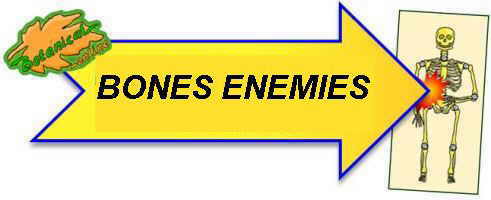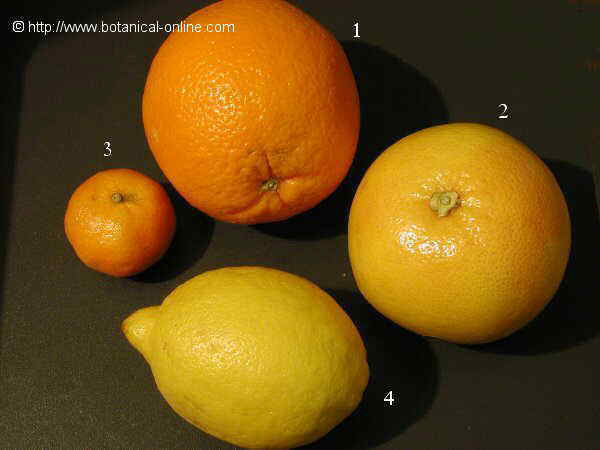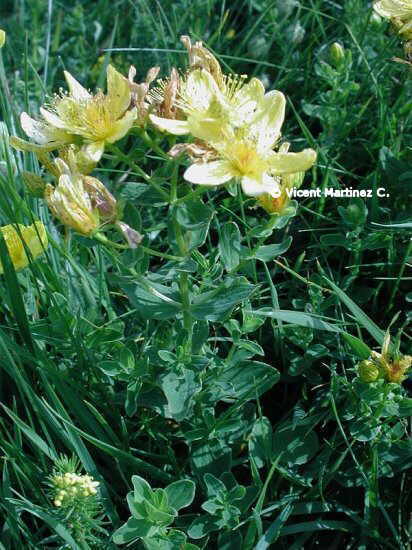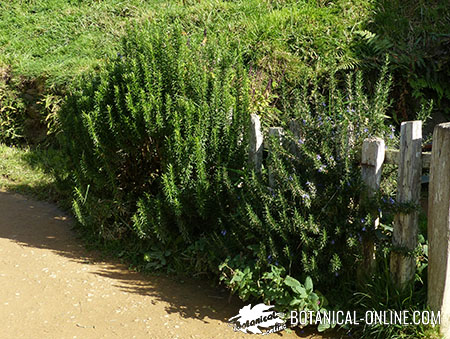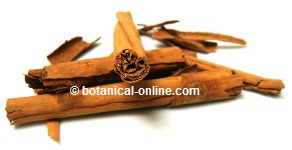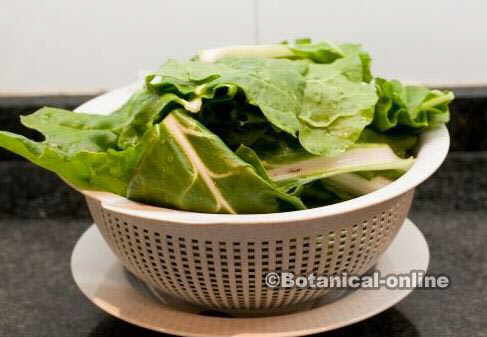Contents
- 1 How to prevent or treat bone decalcification
- 1.1 Why is there a demineralization or loss of calcium from the bones?
- 1.2 Foods that reduce calcium to the bone
- 1.3 Factors that increase the elimination of calcium
- 1.4 Factors that increase the fixation of calcium in the bone
- 1.5 Calcium-phosphorus balance of diet
- 1.6 Is it bad to eat foods that have a lot of phosphorus?
- 1.7 How to calculate if a diet is calcifying or decalcifying?
- 1.8 Examples of calcium calcifying foods
- 1.9 What are decalcifying foods?
- 1.10 Osteoporosis in Asian countries
- 1.11 What are the most calcifying foods?
- 1.12 What are the decalcifying foods?
- 1.13 How is a calcifying diet?
- 1.14 Some tips to make a calcifying diet are:
- 1.15 When does the decalcification of the bones take place?
- 1.16 From the age of 40 the bones weaken
- 1.17 How to avoid decalcification?
How to prevent or treat bone decalcification
Why is there a demineralization or loss of calcium from the bones?
The bones are a structure formed mainly by minerals such as calcium, magnesium, manganese and boron. One of the most common causes of decalcification or osteoporosis can be an inadequate diet and a sedentary lifestyle.
Carrying an incorrect diet, along with bad health habits, can cause the weakening of the muscles (sarcopenia) and the demineralization of the bones over the years.
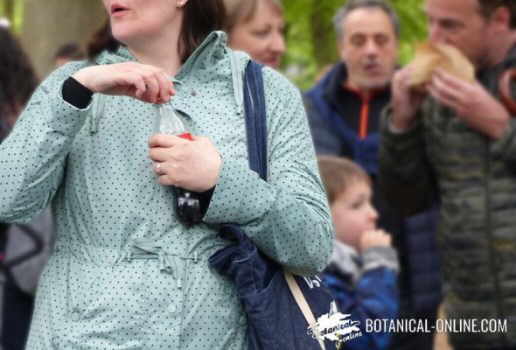
Food based on fast-food and soft drinks is very demineralizing.
Foods that reduce calcium to the bone
You must take into account aspects of the diet necessary for calcium to be properly assimilated. The factors that influence the formation and elimination of calcium in the body are:
Factors that increase the elimination of calcium
- Excess of animal protein (It does not occur with vegetable protein because legumes, nuts and protein foods of vegetable origin have many more minerals than animal protein, such as magnesium, calcium, etc.)
- Consumption of foods with lots of salt (increases the elimination of calcium in the urine)
- Phosphates, which are found in carbonated beverages, in the form of additives (even if they are light drinks!)
- Excess of refined sugar, through products such as pastries, cookies, jam, sugar, syrups, etc.
- Junk food (becasue its content in animal protein, salt, phosphates and excess sugar)
Factors that increase the fixation of calcium in the bone
- Vitamin D (sunbathing, oily fish)
- Physical exercise
- Diet rich in calcium, magnesium, vitamin K, antioxidants and trace elements such as boron, …
- Estrogens (deficit in menopause)
Calcium-phosphorus balance of diet
In the calcification or decalcification of the bones, several factors intervene. Among them, we find the calcium-phosphorus balance of the diet. As the name indicates, it consists of a balance between the two minerals. That is, if a food contains more phosphorus than calcium, or vice versa. This balance is closely related to the alkaline diet and is based on the body’s pH balance.
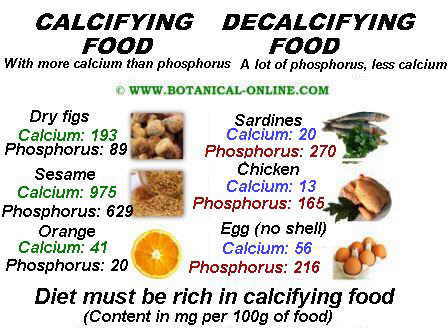
Summary of the theory of decalcifying foods. The idea is that at the end of the day many more “calcifying” foods are consumed than “decalcifying” foods. Tails with gas, sugar and tobacco subtract calcium from the bone
It can be summarized in the following points:
- Phosphorus is an acid mineral and is abundant in protein-rich animal foods (meat, fish, sausages, cured cheese, etc.)
- Calcium is an alkaline mineral and is found in legumes, vegetables, fruits, sesame, tubers, etc.
- The human body needs a slightly alkaline pH, so we must provide a diet with more calcium than phosphorus.
- Eating a lot of animal protein (an excess of phosphorus) produces acidification of the body.
- To counteract the acidity of phosphorus, the body releases calcium from its reserves (the calcium in the bones) into the blood, causing bone decalcification.
- Maintaining a diet of this type, in the long term, can produce a demineralization of bones (loss of calcium from bones), leaving them “empty” inside, weak and very fragile.
Is it bad to eat foods that have a lot of phosphorus?
It is not about stopping eating foods that have a lot of phosphorus, because this mineral has important functions for health. It is that at the end of the day, many more “calcifying” foods are consumed than “decalcifying” foods. Cola drinks with gas, sugar and tobacco subtract calcium from the bone.
Remineralising foods
How to calculate if a diet is calcifying or decalcifying?
To calculate whether the diet is calcifying or decalcifying, calcium is divided by phosphorus. According to the result:
- It has been established that a food is calcifying when the coefficient is equal to or greater than 0.7
- Decalcifying foods are those with a calcium / phosphorus coefficient of less than 0.7. You should eat more calcifying foods so that the overall diet also becomes calcifying.
Examples of calcium calcifying foods
Practical examples: (Calcium and phosphorus content expressed per 100g.)
FIGS
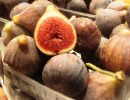
Calcium: 54 mg.
Phosphorus: 32 mg.
Relation calcium / phosphorus:
1,7
VERY CALCIFYING
CHEESE
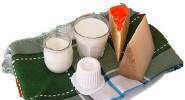
Calcium: 1029 mg.
Phosphorus: 627 mg.
Relation calcium / phosphorus:
1,6
VERY CALCIFYING
HAZELNUTS
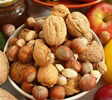
Calcium: 226 mg.
Phosphorus: 333 mg.
Relation calcium / phosphorus:
0,7
CALCIFYING
ECOLOGICAL SOY
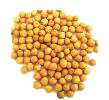
Calcium: 201 mg.
Phosphorus: 550 mg.
Relation calcium / phosphorus:
0,4
DECALCIFYING
CHICKEN
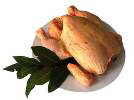
Calcium: 13 mg.
Phosphorus: 165 mg.
Relation calcium / phosphorus:
0,1
VERY DECALCIFYING
What are decalcifying foods?
If the food contains more phosphorus than calcium, it will be considered a descaling food and the ratio will be less than 0.8. There will be a demineralization (loss) at the calcium level of the bones, leaving them “empty” inside, weak and very fragile.
(If the ratio is 0.7 it is considered acceptable, due to the real difficulty of performing a calcifying diet)
Osteoporosis in Asian countries
Often the low rate of osteoporosis in some Asian countries is striking, when, surprisingly, in those same places practically no dairy products are consumed. The explanation given to this phenomenon is that, although in these countries there is low consumption of dairy, calcifying diets are made.
This is because they consume little animal meat and vegetables are abundant in the diet, vegetables such as soy, either in the form of tofu or tempeh (rich in calcium and magnesium) and calcium-rich seeds such as sesame. Another protective factor is offered by the phytoestrogens of soy, which is widely consumed in Asia.
In contrast, in Western countries, there is a tendency to eat a lot of meat, and, in addition, accompanied by carbonated drinks (containing phosphates), which is the most desalting food combination that exists.
What are the most calcifying foods?
If the food contains more calcium than phosphorus, it will be considered a calcifying food and the ratio will be greater than 0.8. There will be a remineralization (increased storage) at the calcium level of the bones, forming a strong, solid and very resistant structure.
Calcifying foods are:
- Sesame and almonds (See: Calcium in nuts)
- Dried fruits such as dried figs, dried apricots, dates, and raisins.
- Citrus fruits, which are the richest fruits in calcium (mandarin, orange, lemon, grapefruit or lime) (See: Calcium in fruits)
- Other fruits: figs, kiwi, strawberries, raspberries, papaya or blackberries.
- Vegetables: carrots, turnips, celery, artichokes, borage, green beans, cauliflowers, cabbage and broccoli, endives, leeks and onions.
- Organic soy drink (non-transgenic) enriched in calcium contains the same amount of calcium as milk, but with less phosphorus and more magnesium.
- Dairy
- Algae, although it is not recommended to consume often.
What are the decalcifying foods?
Foods called “decalcifying”, that is, having a calcium phosphorus ratio less than 0.7, are the following:
- Nuts and seeds in general (except almonds and sesame)
- Rice and whole grains
- Legumes: lentils, chickpeas, etc.
Very decalcifying foods that should be eaten less frequently are:
- Soft drinks with gas (they contain many phosphates and are very decalcifying, in addition to not being nutritious)
- Sausages, pâtés, etc.
- Red meat, white meat, fish and eggs.
How is a calcifying diet?
- If our diet is mostly through foods that contain more phosphorus than calcium, it will be decalcifying. Especially if it is accompanied by other factors that reduce minerals to the body, such as sedentary lifestyle, eating lots of salt, or smoking.
If this happens, the tendency will be that our bones will have to compensate for this lack of calcium and therefore, they will extract the mineral from their structure, becoming increasingly weakened and fragile.
- If, on the other hand, our diet contains mostly foods with more calcium than phosphorus, it will be calcifying.
If this happens, the tendency will be that our bones will not have to compensate the lack of any structural mineral and therefore, they will be able to manufacture and keep in good condition all the bones and teeth of our body, so that they are resistant and strong. Of course, exercise is still essential because it is the one that fixes calcium to bone.
Some tips to make a calcifying diet are:
- Eat legumes 2 to 3 times a week: Although they are not “calcifying”, they provide other minerals such as magnesium, vitamin K, boron, etc., essential for healthy bones.
- Eat 5 pieces of vegetables and fruits rich in calcium daily.
- Our diet must be varied enough to maintain the necessary balance between the two minerals.
When does the decalcification of the bones take place?
Humans make bone tissue until they are 25 years old. During childhood, adolescence and until age 25, the body is when it makes its reserves of calcium, which are bones. Therefore, during this first stage of life we must take care that the nutrition of the young is rich in calcium and minerals for the bones.
- If the balance of the diet is decalcifying and we maintain this situation for a long time, we can cause the appearance of a disease called osteomalacia or favor the appearance of osteoporosis and all its serious consequences.
- If we maintain a correct and balanced diet, with a calcifying balance, we can prevent the onset of a disease called osteoporosis and all its serious consequences, with which it is necessary to take it into account.
From the age of 40 the bones weaken
In addition, the bones are in constant regeneration and balance (with a calcifying diet), but after 40 years of age, bone regeneration becomes unbalanced and tends to lose its mineral content. That is, they weaken and wear out progressively, because they tend to lose more minerals than to refuel them.
This is a fact not modifiable and implicit in the age of people, therefore, we should not aggravate it with a decalcifying diet, which would greatly worsen the situation by further increasing the loss of bone minerals, weakening them even faster and increasing massively the chances of osteoporosis appearing, with irreversible consequences.
This is easily seen when doctors observe that, in older people, the dementia process accelerates when there is a hip fracture and the feeding is not sufficiently taken care of.
Feeding for hip fractures
How to avoid decalcification?
It is recommended that a diet that has a positive and calcifying balance be carried out throughout life, especially in the stages of greatest growth, since it is where bones and structures are formed. If we do not build strong and resistant from the beginning, it is more likely that bone problems appear in adulthood.
This does not mean that we can only consume the calcifying foods, but that the diet must be calcifying, that is, the global of all the foods consumed throughout the day.
- Therefore, we must alternate foods with calcifying effect, with foods with a decalcifying effect, and try to maintain the calcium-phosphorus balance of our diet.
Foods that are harmful to bones
![]() More information on osteoporosis.
More information on osteoporosis.

